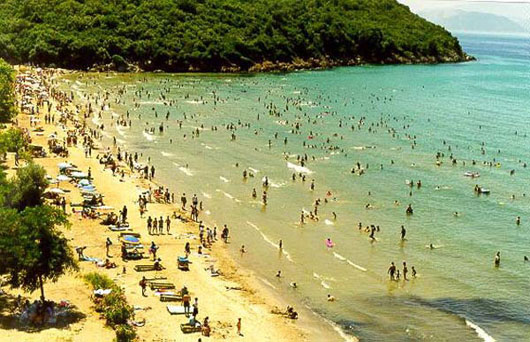The Dilek National Park is a vaste forested zone pointing towards the Greek island of Samos. It is one of the finest nature reserve in Turkey. It may be reached by road (28 kms) or by boat. Here, there is no concrete, only unspoiled nature, with the all variety of its fragrances and fauna. Trees line tranquil pebble beaches, with a few showers, wooden deck chairs and wicker parasols. Some have a snack stand for food and drinks.

Occupying an area of c 10,985 hectares, the park has a variety of wildlife which includes leopards, foxes, wild boar, lynxes, badgers, bears, jackals, striped hyenas, hares, martens and porcupines. The vegetation ranges from “mediterranean maquis” on the northern slopes to red and Austrian pine on the south. There are also carob trees, cypresses, oriental planes, sweet bay, judas trees, and the poisonous, evil-smelling bean trefoil. In spring look out for the blu anemone blanda and anemone hortenis. There are orchids, ophrys lutea and orchis anatolica, and delicate cyclamens in the shade. Butterflies- orangetips, eastern festoons and large tortoiscshells- flit throught the glades. There are also exceptionally large yellow-and-black striped hornets which, fortunately, do not usually sting. The highest point in the park is Dilek Hill (1237 m). The flora and fauna in the park are protected. Anyone contravening the regulations, particularly those concerning fires, risks severe penalties.
There are facilities for picnics and barbecues, a restaurant at Icmeler Koyu and a café at Aydinlik Beach. Bathing is from clean, sandy or pebble beaches. A pleasantly shaded road links the various areas of activity: foot paths (especially in the Sarikaya canyon), sporting facilities and beaches (Icmeler, Aydinlik, Kavakli and Karacasu) accessible on foot or by car on good roads. Beyond the last beach, the road stops and gives way to an area reserved exclusively for wildlife. For a small fee (approximately 65 US cents), this place is yours for the entire day.

